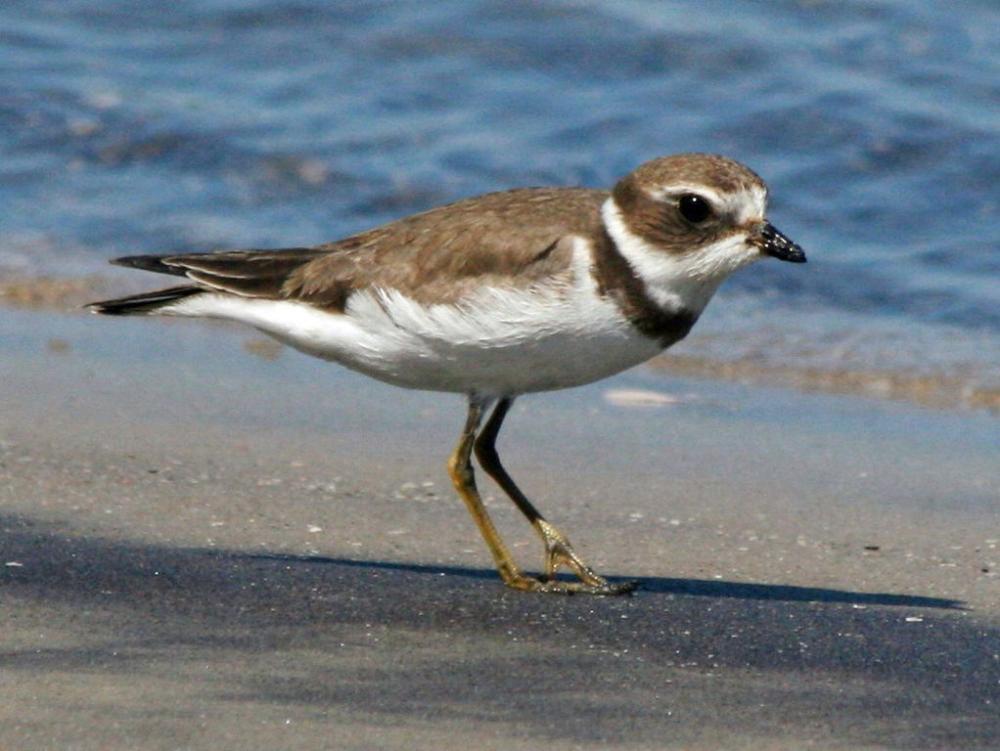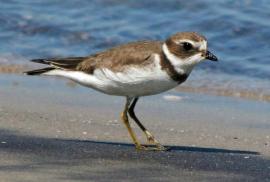Guide to Boreal Birds
Overview
Like other plovers, the Semipalmated forages in short bursts-a quick run followed by a stop-during which it scans the sand or mud in front of it for any sign of life before running on. It does not probe like its usual associates, the longer-billed sandpipers. Taking most of their food right from the surface, Semipalmated Plovers prey mainly on small crustaceans and mollusks.
Description
6-8" (15-20 cm). A brown-backed plover with white underparts and 1 black breast band. Bill stubby, yellow-orange, with dark tip. Immature has all-black bill and brownish breast band. Piping Plover similar but much paler above. Larger Killdeer has 2 black breast bands.
Voice
A plaintive 2-note whistle, tu-wee. Also a soft, rather musical rattle.
Nesting
4 buff eggs, spotted with dark brown and black, placed in a shallow depression sparsely lined with shell fragments, pebbles, and bits of vegetation on the tundra.
Habitat
Breeds on sandy or mossy tundra; during migration found on beaches, mudflats, shallow pools in salt marshes, and lakeshores.
Range/Migration
Breeds from Alaska east to Newfoundland and Nova Scotia. Winters regularly from California and Carolinas south and along Gulf Coast; rarely farther north.



